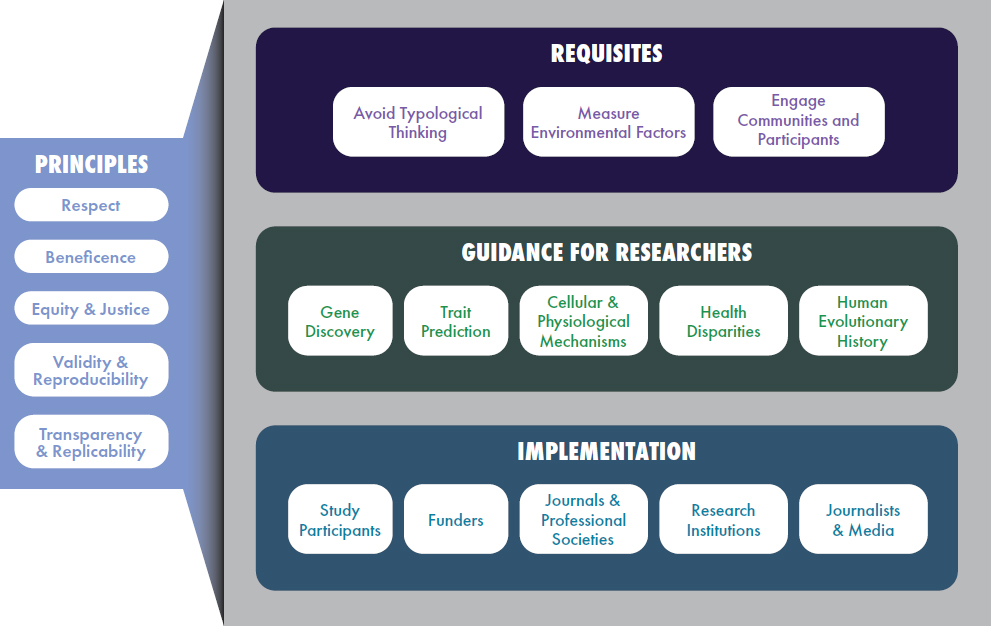This page intentionally left blank.
SECTION II OVERVIEW
Section I set the stage for an imperative to transform both the conceptualization and use of population descriptors and the design of genetics and genomics studies. To that end, the recommendations offered in Section II are embedded within a multidimensional framework that provides a holistic approach to fostering and sustaining trustworthy (e.g., ethically and empirically sound) genetics and genomics research. For research findings to be trustworthy, they must be generated with validity and accuracy and under a commitment to using that research to advance the interests of the participants and provide benefits to broader society. In doing so, both the research and researcher become trustworthy. Therefore, the committee’s recommendations span the genetics and genomics research ecosystem, recognizing the importance of various parties in facilitating systemic change in the field.
Section II comprises four chapters that provide a road map for an evolution of this research ecosystem. Researchers will be the ones to lead transformation of the field, influenced and supported by a variety of relevant parties. Thus, for the committee’s recommendations to be successful, they must be grounded in key ethical and empirical principles that drive the trustworthiness of the research and build trust among all interested parties.
Chapter 3 presents a set of guiding principles that undergird the committee’s recommendations. Chapter 4 provides recommendations on some overarching concerns that will have to be addressed to achieve sustained change in genetics and genomics practice and research. These items are dispelling typological thinking, engaging with communities of study participants, and integrating measurements of environmental factors in genomics research, whenever feasible. Chapter 5 offers detailed guidance and best practices to researchers concerning the use of population descriptors organized by type of genomics study. Chapter 6 focuses on implementation and accountability strategies for the relevant parties who support, influence, and communicate the work of the researchers (see Figure II-1 for a representation of the framework).
Researchers in human genetics and genomics have often struggled with a lack of clear, specific guidance. The recommendations and best practices offered in this section are, therefore, intended to operationalize the guiding principles with specific practices and procedures.





